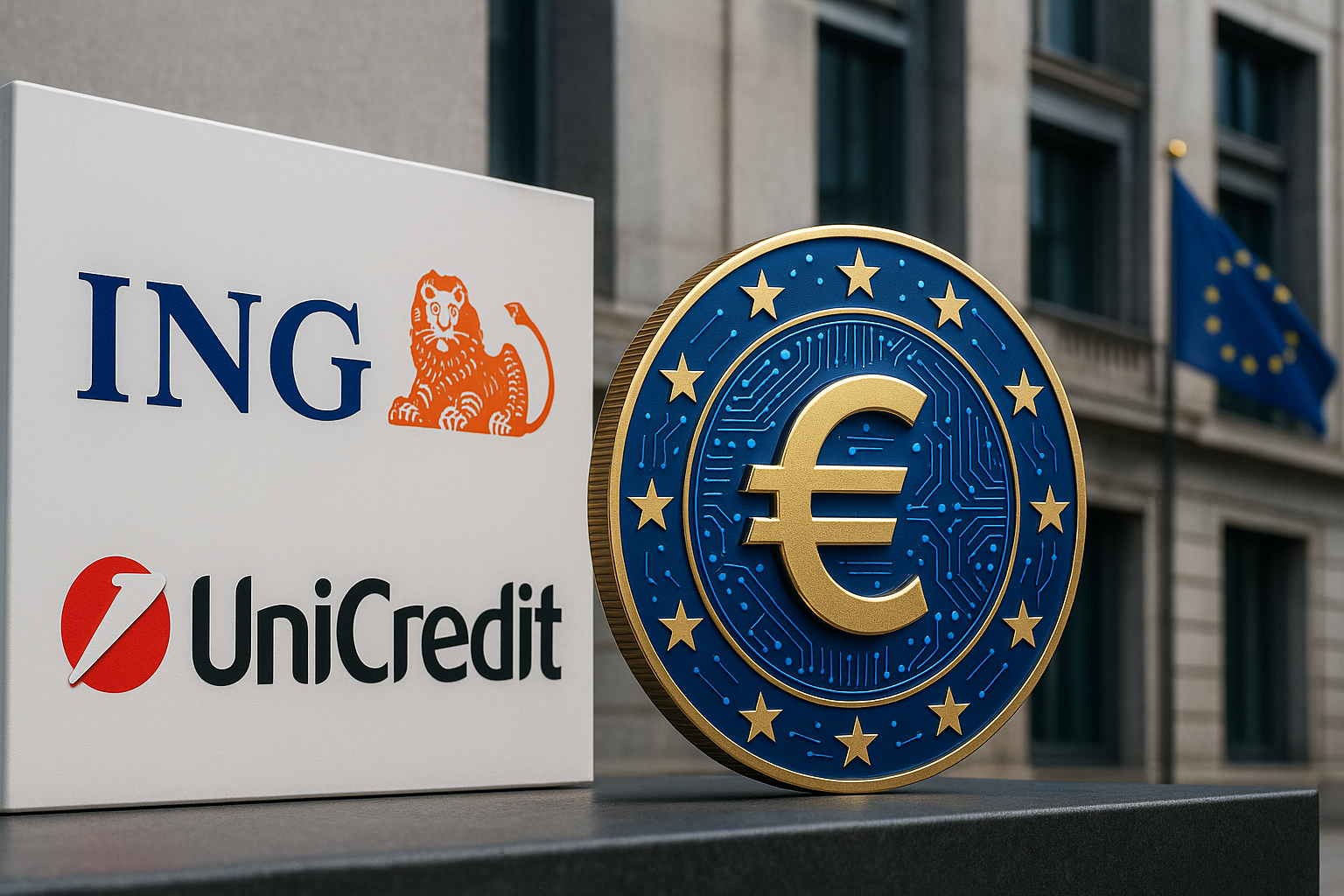Nine major European banks have joined forces to launch a Euro stablecoin by 2026. The group includes ING, UniCredit, CaixaBank, and several other leading players across the continent. Together, they plan to create a digital currency backed one-to-one by the euro, ensuring stability and compliance with upcoming regulations. This initiative comes at a time when Europe is looking to reduce its reliance on U.S. dollar-backed stablecoins and secure its financial sovereignty. By working together, these banks are signaling that they want to play a direct role in the future of digital money rather than leaving it to tech companies or foreign institutions.
Why the Euro Stablecoin Matters for Europe
The planned Euro stablecoin is more than just another digital token. It represents a strategic response to the rapid rise of stablecoins dominated by U.S. issuers. If successful, the project could give Europe its own trusted alternative that aligns with MiCA, the EU’s regulatory framework for crypto assets. This alignment is crucial, as regulators want digital currencies to meet high standards of transparency, security, and consumer protection. For banks like ING and UniCredit, the initiative offers a chance to strengthen customer trust and position themselves at the center of Europe’s digital finance ecosystem. Most importantly, the Euro stablecoin could help safeguard the role of the euro in global trade and reduce dependency on external financial infrastructure.
ING, UniCredit, and Peers Lead the Charge
At the heart of this project are established institutions with deep experience in managing money and compliance. ING and UniCredit bring strong cross-border banking networks and reputations for innovation. CaixaBank and other members add their reach in key European markets. Together, the consortium has both the capital and expertise to deliver a stablecoin that can meet the high expectations of regulators and customers. This collective strength sets the initiative apart from smaller fintech projects, where credibility and scale often remain challenges. By pooling their resources, the banks aim to create a solution that is both secure and widely adopted.
Stablecoin Design Focused on Trust and Regulation
The Euro stablecoin will be fully backed by reserves, ensuring that each digital coin is tied directly to one euro. This design is meant to minimize volatility and avoid the collapses seen in some algorithmic stablecoins. The banks are also building the system with MiCA compliance at its core, aiming to guarantee investor protection and smooth integration with existing payment infrastructure. Furthermore, the project will be managed by a newly formed company dedicated solely to this task, which adds governance clarity and accountability. This structure should help regulators and customers feel confident that the stablecoin is designed for long-term stability and not short-term speculation. In a market where trust is everything, this approach could become a key differentiator.
What Comes Next for the Euro Stablecoin and Banks
The launch target is set for the second half of 2026, giving the consortium time to navigate technical, legal, and regulatory challenges. Over the next two years, ING, UniCredit, and their peers will need to fine-tune the design, secure regulatory approvals, and build strong partnerships with merchants and payment platforms. Adoption will be the real test, as customers and businesses must see clear benefits compared to existing payment methods. If the Euro stablecoin gains traction, it could reshape how Europeans pay, invest, and interact with digital finance. It may also inspire other regions to follow suit with their own bank-backed stablecoins, signaling a new phase in the global competition over digital money.
